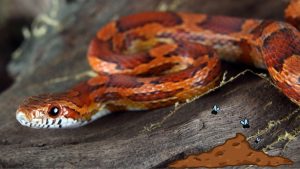Understanding the Feline Reproductive Cycle
Cats are fascinating creatures, and their reproductive system is no exception. Female cats go through a heat cycle, also known as estrus, several times a year, where they become receptive to mating. But how long does a cat’s heat cycle last, and what are the signs to look out for?
According to PetMD, the average cat’s heat cycle lasts for seven days, but it can range from two to nineteen days. During this time, the female cat will show signs of being in heat, such as increased vocalization, restlessness, and rubbing against objects. If the cat mates during this period, the signs of heat will resolve within 24-48 hours of ovulation. However, if the cat does not mate, the cycle can repeat itself every two to three weeks, as long as there are extended daylight hours.
Understanding a cat’s heat cycle is crucial for cat owners, especially those who do not want their cats to become pregnant. Spaying is the most effective way to prevent unwanted pregnancies and eliminate the risk of certain health issues. However, if a cat is not spayed, it is essential to be aware of the signs of heat and take measures to prevent unwanted mating.
What is a Heat Cycle?
A heat cycle, also known as the estrous cycle, is the reproductive cycle of female cats. It is the period during which a female cat is sexually receptive and can mate with a male cat to become pregnant. A cat’s heat cycle is controlled by hormones, and it typically occurs during the spring and summer months when there are longer daylight hours.
The average length of a cat’s heat cycle is between seven and ten days, but it can range from two to three weeks. During this time, the female cat will exhibit certain behaviors and physical changes that indicate she is in heat. These include:
- Increased vocalization: Female cats in heat tend to meow more frequently and loudly than usual.
- Restlessness: A cat in heat may pace, roll around, or assume a mating posture.
- Urinating frequently: Female cats in heat may urinate more frequently than usual and may spray urine to mark their territory.
- Swollen vulva: The vulva of a female cat in heat may appear swollen and red.
It is important to note that a female cat can become pregnant during her first heat cycle, so it is essential to spay or neuter cats to prevent unwanted litters. Additionally, cats that are not spayed or neutered may exhibit unwanted behaviors, such as spraying and aggression, during their heat cycles.
How Long Does a Cat’s Heat Cycle Last?
A cat’s heat cycle, also known as estrus, can last anywhere from 2 to 19 days, with the average length being seven days, although it can range from 1 to 21 days. During this time, the female cat is receptive to unneutered males and can become pregnant. Mating may shorten the duration of the heat cycle, but it isn’t a guarantee.
The age at which a cat first goes into heat can vary, but the average female cat will start to cycle between 6-9 months of age. However, heat cycles can start as early as 4 months of age and as late as 12 months. Short-haired breeds will typically begin to cycle earlier, while long-haired or larger breeds may not show signs of heat until 18 months of age.
If the queen (an intact female cat) is not mated during estrus, she will go out of heat for a short period of time, usually about seven days, but it can range from 2 to 19 days. It’s important to note that cats can go into heat multiple times throughout the year, especially during the spring and summer months when the days are longer.
It’s important to keep your cat indoors during her heat cycle to prevent unwanted pregnancies and to minimize the risk of her contracting diseases from unneutered males. If you have no plans to breed your cat, spaying her is the best option to prevent heat cycles altogether. Spaying also has the added benefit of reducing the risk of certain cancers and other health issues.
Signs of a Cat in Heat
When a female cat is in heat, she exhibits certain physical and behavioral signs that indicate her reproductive cycle is active. Here are some common signs to look out for:
- Vocalization: A cat in heat will meow excessively, often with a distinctive, high-pitched sound.
- Restlessness: A cat in heat will be more active and restless than usual, pacing around and rubbing against objects.
- Rolling: A cat in heat may roll around on the ground, particularly if she is in the presence of a male cat.
- Increased Affection: A cat in heat may become more affectionate than usual, rubbing against her owner and seeking attention.
- Licking and Grooming: A cat in heat may spend more time grooming herself, particularly around her genital area.
- Spraying: A cat in heat may spray urine to mark her territory and attract male cats.
- Posture: A cat in heat will assume a characteristic posture with her hindquarters raised and tail to one side.
It’s important to note that not all cats exhibit all of these signs, and some cats may show different signs altogether. Additionally, some cats may go through their heat cycle silently, without exhibiting any obvious signs at all. Therefore, it’s important to be aware of your cat’s behavior and to consult with a veterinarian if you suspect she may be in heat.
What Happens During a Cat’s Heat Cycle?
When a female cat reaches sexual maturity, she will begin to go through heat cycles, also known as estrus cycles. These cycles can start as early as four months of age and will continue until the cat is either spayed or bred.
During a cat’s heat cycle, her body goes through several changes in preparation for mating and potential pregnancy. The cycle typically lasts for about a week, but can range from 2 to 21 days.
The heat cycle is divided into four phases: proestrus, estrus, metestrus, and anestrus. In the proestrus phase, the female cat will begin to show signs of being in heat, such as increased vocalization and rubbing against objects. This phase can last for a few days to a week.
During the estrus phase, which typically lasts for 5 to 7 days, the female cat is receptive to mating and will actively seek out male cats. She may also display more intense signs of being in heat, such as rolling on the ground and elevating her hindquarters.
After the estrus phase, the cat enters the metestrus phase, which lasts for a few days. During this time, her body prepares for pregnancy, but if she does not mate, her reproductive system will begin to shut down.
Finally, the cat enters the anestrus phase, which is a period of sexual inactivity that can last for several weeks or months.
It’s important to note that if a female cat does not mate during her heat cycle, she may continue to cycle every few weeks until she either mates or is spayed. Additionally, unspayed female cats are at risk for developing health issues such as uterine infections and mammary tumors.
How Often Do Cats Go Into Heat?
Female cats, also known as queens, go into heat several times a year. The frequency of their heat cycles depends on various factors such as their age, breed, and the time of year.
On average, a female cat will go into heat every three weeks during the breeding season, which typically lasts from early spring to late fall. However, some cats may go into heat as often as every two weeks, while others may have longer intervals between cycles.
The first heat cycle usually occurs when a female cat is between six and nine months old, although it can start as early as four months or as late as 12 months. Short-haired breeds tend to start their heat cycles earlier than long-haired or larger breeds.
It is important to note that once a female cat goes into heat, she will continue to do so until she mates or the breeding season ends. If she does not mate, her heat cycle will typically last for seven days, although it can range from one to 21 days. After this period, she will go out of heat for a short period of time, usually about seven days, but it can range from two to 19 days.
Owners should be aware that cats in heat can be quite vocal and may display behavioral changes such as restlessness, increased affection, and spraying. It is important to keep female cats indoors during their heat cycles to prevent unwanted mating and pregnancy.
In summary, female cats go into heat several times a year, with the frequency of their cycles depending on various factors. The first heat cycle usually occurs when a cat is between six and nine months old, and the cycle lasts for an average of seven days if the cat does not mate. Owners should be aware of the behavioral changes that occur during a cat’s heat cycle and take steps to prevent unwanted mating and pregnancy.
Frequently Asked Questions
How often do cats go into heat after the first time?
Cats can go into heat as frequently as every two to three weeks. However, this can vary depending on the cat’s age, breed, and environment.
When do cats stop going into heat?
Cats typically stop going into heat when they are spayed or reach old age. Unspayed cats can continue to go into heat throughout their entire lives, but the frequency of heat cycles may decrease as they get older.
How can I get my cat out of heat?
The only way to get a cat out of heat is to allow them to mate or to have them spayed. It is not recommended to let a cat mate during their heat cycle, as this can lead to unwanted litters and potential health risks.
How many heat cycles do cats have in a month?
Cats typically have one heat cycle per month, but this can vary. The length of the heat cycle can range from a few days to several weeks, and the frequency of heat cycles can depend on various factors such as breed, age, and environment.
How long does a male cat stay in heat?
Male cats do not go into heat like female cats do. Instead, they are always ready to mate. However, male cats may exhibit certain behaviors when a female cat is in heat, such as increased vocalization and restlessness.
Do cats bleed when in heat?
Unlike humans, cats do not bleed during their heat cycle. However, they may exhibit other physical and behavioral changes such as increased vocalization, restlessness, and rubbing against objects.
Author
-

Lawrence, the founder of Pet Ploy, established the website in mid-2023. With a lifelong love for pets, Lawrence has been surrounded by a variety of animals since his early years. From dogs and cats to guinea pigs, rabbits, fish, and more, he has experienced the joy of caring for a diverse range of pets. Drawing from his deep-rooted passion, Lawrence created Pet Ploy to share his knowledge and enthusiasm with fellow pet enthusiasts. Through the platform, he aims to provide valuable insights, tips, and resources to promote the well-being and happiness of pets everywhere.











